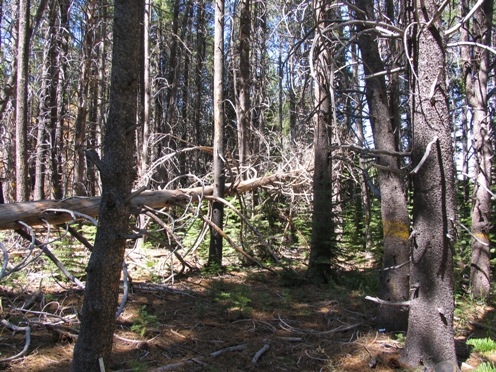
“The fire interval is completely out of whack compared to pre-settlement conditions,” Kocher said.
In a historical, natural and healthy fire regime, nearly half of Sierra forests would experience fire every 12 years and three-quarters would burn every 20 years. However, only 0.2 percent of Sierra forest land has burned repeatedly at least every 20 years in modern times, while 74 percent has not had a single wildfire or prescribed burn in the last 103 years.
These conclusions are part of a report Kocher produced for the Sierra Nevada Conservancy, a state agency created by the California legislature in 2004 with the understanding that the environmental, economic and social well-being of the Sierra Nevada and local communities would benefit from an organization providing strategic direction.
SNC commissioned reports about Sierra Nevada indicators, such as Demographics and the Economy, Land Conserved and Habitat, and Water and Air Quality and Climate. Kocher’s report is titled Forest Health and Carbon Storage. Future system indicator reports will cover Fire Threat and Agricultural Lands and Ranches.
Forest health is a particularly difficult indicator to frame and quantify as there is no consensus on exactly what defines forest health, Kocher writes in the introduction.
“Forest health is a concept that is commonly used but not well defined,” Kocher said. “You’d think you’d be able to answer how healthy a forest is in a straight forward way. But you have to look at stressors, the natural processes that are happening in a forest. What does the landscape look like?”
Because forest health cannot be characterized by any single, simple measure, Kocher selected three data sets to provide an indication of the health of forests in the region: fire return interval, wildfire threat to ecosystems and forest pest impact and threat. She found that fire return interval told the most provocative story.
Fire return interval tracks the frequency with which wildfire revisits the same land over and over. Kocher compared the frequency of fire return between the pre-settlement “natural” state and modern times.
The pre-settlement or “reference” fire return interval is an estimate of how often, on average, a given forest type likely burned in the three or four centuries prior to Euro-American settlement in the middle of the 19th century. As such, the reference state includes fires deliberately set by Native Americans to manage forest vegetation and wildlife.
Researchers determined fire frequency by analyzing fire scars in tree rings of live and dead trees. Results show that forested areas previously burned every 11 years on average in the warmer and drier lower elevation forests such as ponderosa pine. On the other end of the spectrum, fire occurred only every 133 years for sub-alpine forests where it takes much longer for fuels to accumulate and dry.
Fire suppression in the last 100 years has left much of the Sierra forest land vulnerable to high severity wildfire, Kocher wrote in her report. High severity wildfire across wide areas poses a threat to forest plant and animal life, to forest communities and watershed function, particularly in the northern half of the Sierra Nevada Conservancy Region.
Kocher’s report also reviewed carbon storage in Sierra Nevada forests. Since carbon in the atmosphere is leading to global climate change, there is increased interest in storing carbon in forests.
“It could be said that by suppressing fire, we have sequestered more carbon,” Kocher said. “In an overstocked forest, there are more standing trees and more fuel on the ground. Storing more carbon may help in the short run, but in the long term, your stand has a higher risk of burning up. That puts a lot of carbon into the atmosphere.”
Forest thinning improves the stability of carbon storage in the long-term. Whether it reduces the amount of carbon stored depends on what factors are taken into consideration, Kocher suggests. Part of the complexity of the equation stems from whether or not forest products removed from the forest are factored in. Most studies that account for the carbon sequestered by lumber and other products removed during thinning find that thinning both increases the quantity and stability of carbon sequestered by forests over time.